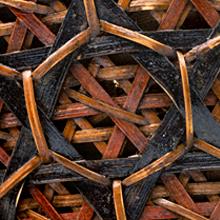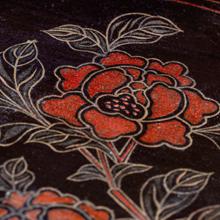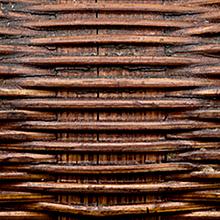Harvey Milk Terminal 1
Harvey Milk Terminal 1
Departures Level 2, Gallery 1E
- Post-Security
Apr 19, 2025 - Jun 07, 2026
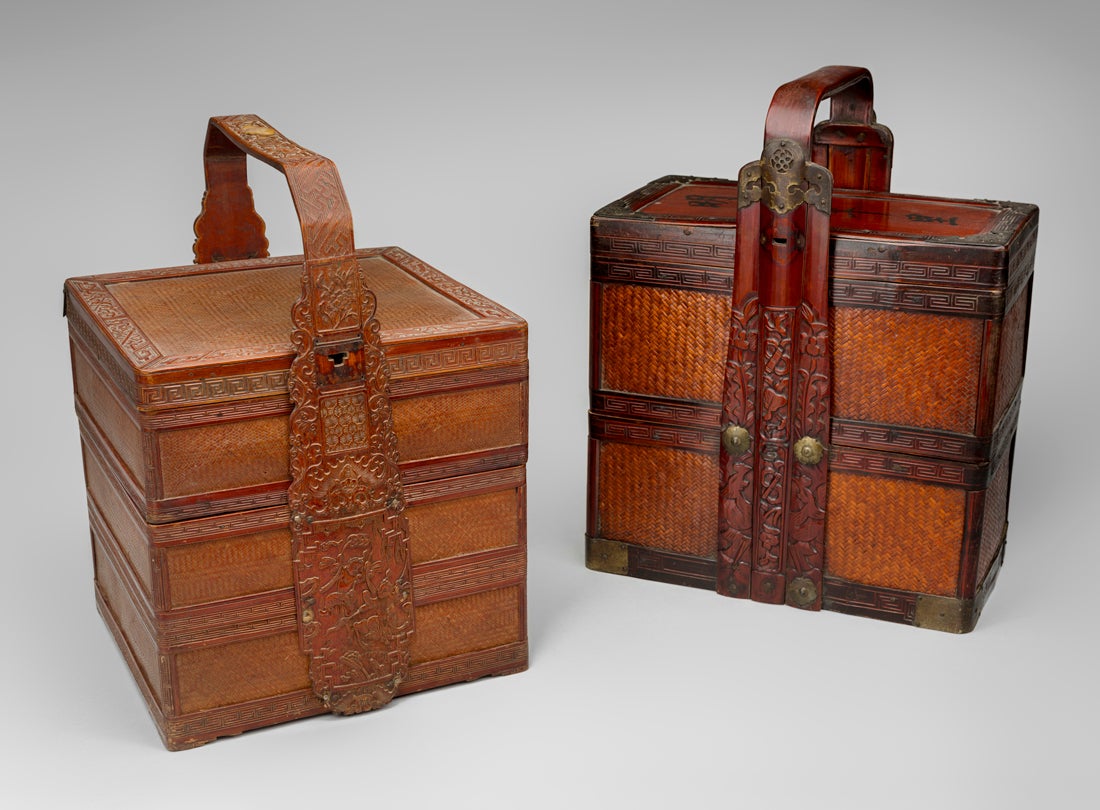
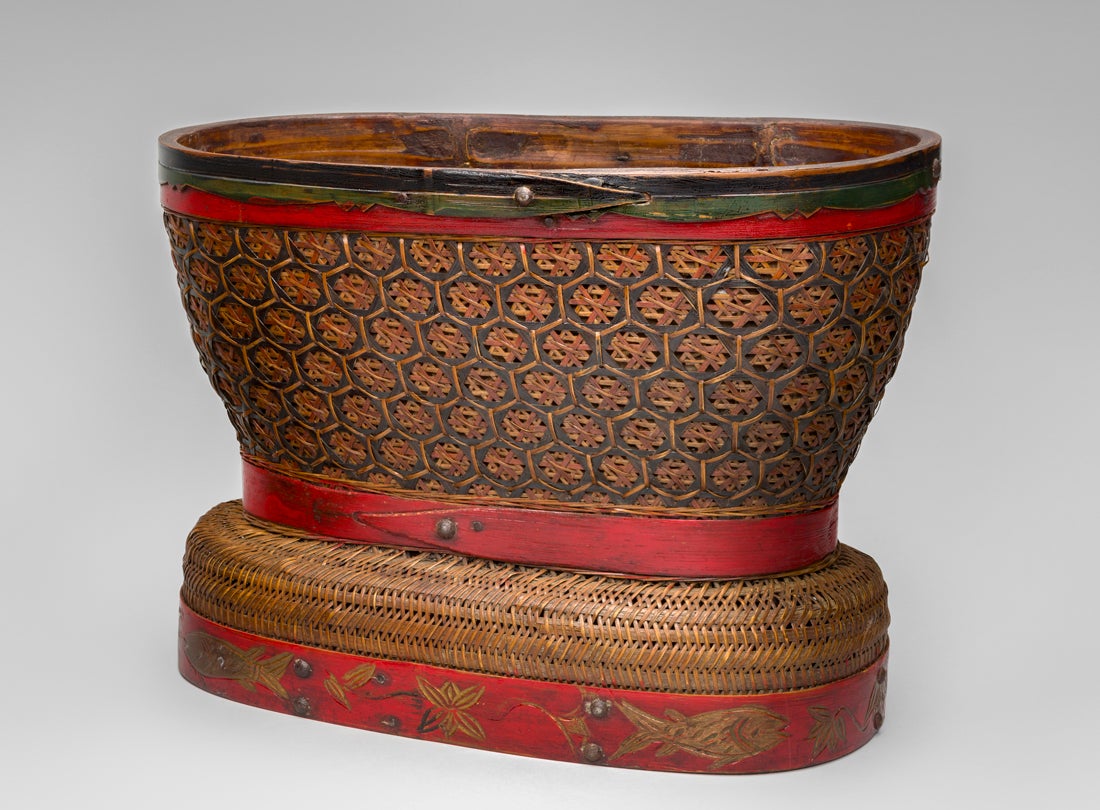

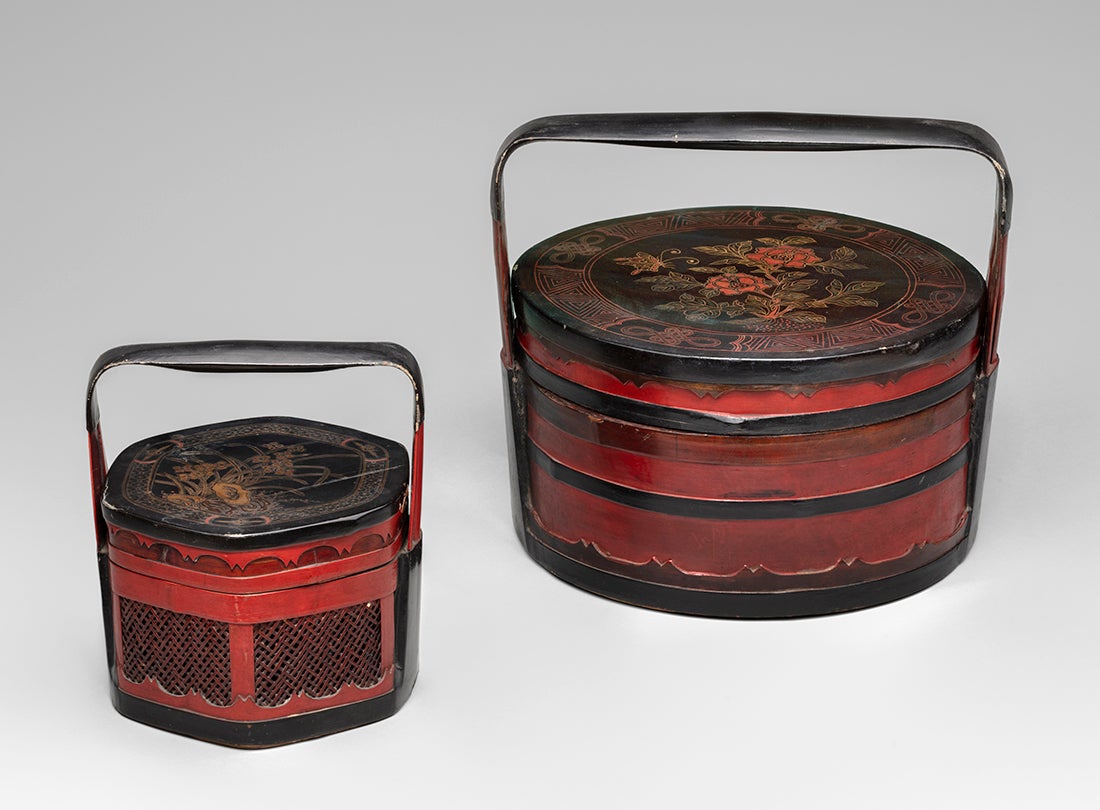
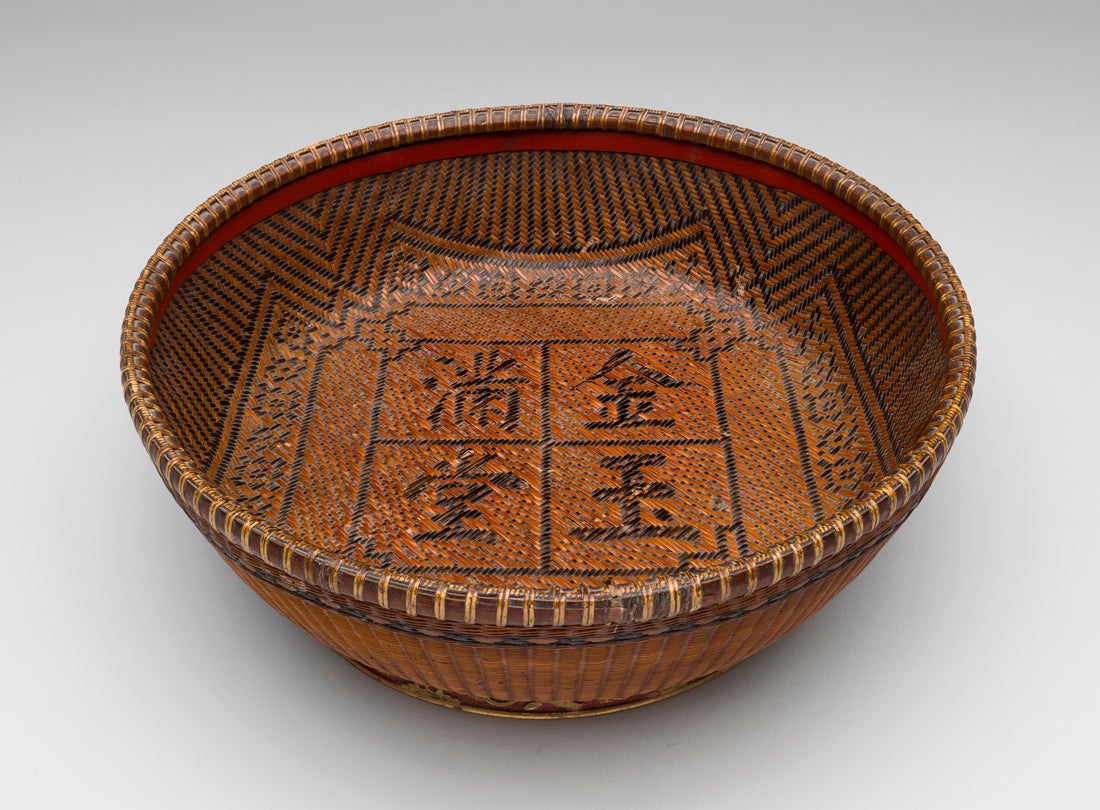
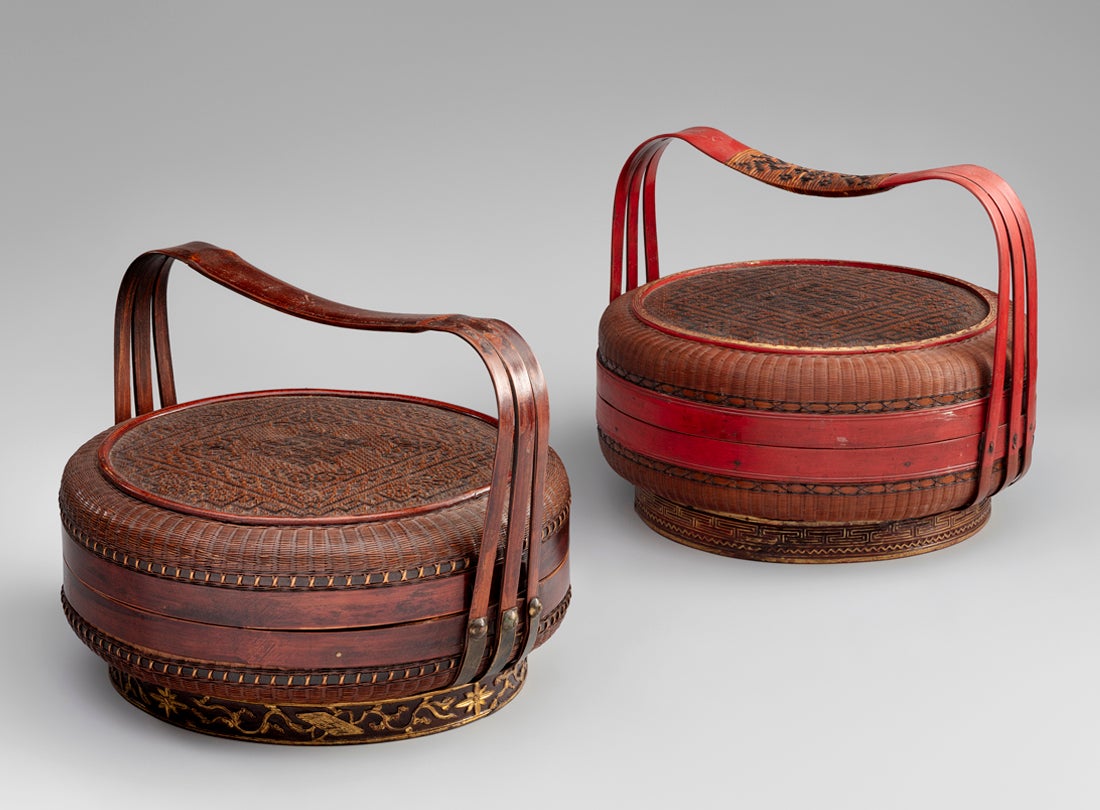
[left]
二屜竹編方形提籃
Two-tiered basket with carved handle 19th century
Zhejiang Province, China
bamboo, wood, metal
Collection of Sally Yu Leung
L2025.0401.006a-d
[right]
二屜竹編長方形提籃
Two-tiered basket with carved handle early 20th century
Zhejiang Province, China
bamboo, wood, metal
Collection of Sally Yu Leung
L2025.0401.019a-e
A bat, one of the most popular rebuses in Chinese art, adorns the side of this basket at left's carved, wooden handle. The Chinese name for bat (fu 蝠) has the same sound as the word for blessings (fu 褔). The downward direction of the bat adds another layer to the visual pun: the descent of blessings. A separate scene appears below the bat. A childlike Daoist immortal, Liu Haichan (劉海蟾), throws a string of three square-holed cash coins in the air. His appearance signifies fortune and monetary gain.
The top of the carrying basket at right states: The Bright Moon Over a Thousand Miles (mingyue qianli 明月千里). The age-old expression is often used to show longing for friends, lovers, or family who are separated over a long distance on a moonlit night.
橢圓形竹藤儲物籃
Oval-shaped storage basket late 19th–early 20th century
Shanxi Province, China
bamboo, cane, wood, lacquer
Collection of Sally Yu Leung
L2025.0401.008
This basket can be flipped over and used as a shallow tray. Fish, which in Chinese (yu 魚) is a homonym for abundance (yu 餘) adorn its lacquered red trim. Objects made from bamboo, such as boxes, bowls, and plates, were particularly popular during the Ming dynasty (1368–1644). Bamboo, a fast-growing treelike grass, grows prolifically in China’s southern regions. Durable and lightweight, dozens of types of bamboo with unique attributes have served as a material to craft everything from containers and tools to furniture and houses since ancient times in China.
二屜竹編圓形提籃
Two-tiered basket with carved handle early 20th century
Zhejiang Province, China
bamboo, wood, metal
Collection of Sally Yu Leung
L2025.0401.011a-c
The deer motif adorning the top of this basket symbolizes longevity and is the only animal capable of finding the fungus of immortality (lingzhi 靈芝). Oftentimes, large baskets such as this one have metal loops or handles at the top to enable a person to carry a pair of baskets on a shoulder pole looped through them.
[left]
竹編漆提盒
Carrying container 19th century
Zhejiang Province, China
wood, possibly bamboo, lacquer
Collection of Sally Yu Leung
L2025.0401.009a,b
[right]
二屜漆圓形提盒
Two-tiered carrying container late 19th–early 20th century
Zhejiang Province, China
wood, lacquer
Collection of Sally Yu Leung
L2025.0401.010a,b
Lacquer, a natural decorative material employed for thousands of years in China, derives from the sap of the Chinese lacquer tree (Toxicodendron vernicifluum). The tree’s viscous, brown liquid is filtered and heated before being combined with materials such as cinnabar or vermillion and charcoal to produce popular colors including red and black. Layers of resin are carefully applied in thin coats to basketry and containers, in addition to a host of other decorative arts. Once the lacquer cures, it produces an extremely durable decorative finish.
The lacquered, wood container at right is made in two compartments with a wooden base. The main decoration on the cover is a butterfly perching on a camellia plant (chahua 茶花). Together, the two motifs form a rebus (dielianhua 蝶戀花), which conveys wishes for a happy marriage. The cover has a border alternation of geometric patterns and endless knots: a pattern of a rope coiled in the shape of a rhombus. Without a head or an end, the knot symbolizes endless blessings and longevity.
竹編針線筐
Sewing basket 19th century
Zhejiang Province, China
bamboo, wood, lacquer
Collection of Sally Yu Leung
L2025.0401.002
Reading vertically from the top right, this sewing basket has characters that were woven to form the phrase “may gold and jade fill your household” (jinyu mantang 金玉滿堂). Basket materials are commonly soaked prior to weaving to make them more pliable. A weaver begins at the bottom center before building the basket’s walls. A variety of weaving techniques are employed such as plaiting, twining, and coiling. Plaiting involves weaving over and under. In coiling, the plant material is wrapped around a foundation, creating a circular or spiral structure. Twining entails wrapping and twisting two or more horizontal strands (wefts) between vertical strands (warps). Countless variations exist within these techniques, and an individual basket often exhibits more than one method, while each individual basket maker contributes their own unique attributes.
[left]
竹編圓形提籃
Basket with handle 19th century
Zhejiang Province, China
bamboo, wood, lacquer
Collection of Sally Yu Leung
L2025.0401.020a,b
[right]
竹編圓形提籃
Basket with handle early 20th century
Zhejiang Province, China
bamboo, wood, lacquer
Collection of Sally Yu Leung
L2025.0401.018a,b
The character for double happiness adorns the lid of the basket at left, which suggests it was originally intended for a wedding. The stylized butterflies that surround it convey wishes for the state of being surrounded by happiness (huantian xidi 歡天喜地).
The center top of the basket at right displays a stylized rendering of the Chinese character for longevity (shou 壽). The geometric patterns that surround the character represent endlessness. On the handle, two swastikas are visible. Originating from India, this Buddhist symbol came to be known as a symbol for “ten thousand” or “unlimited” in China.

